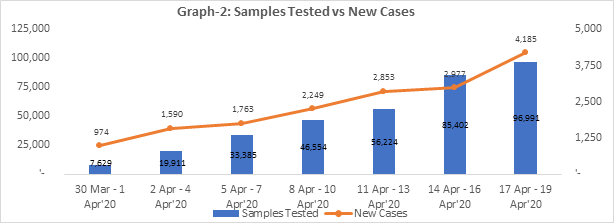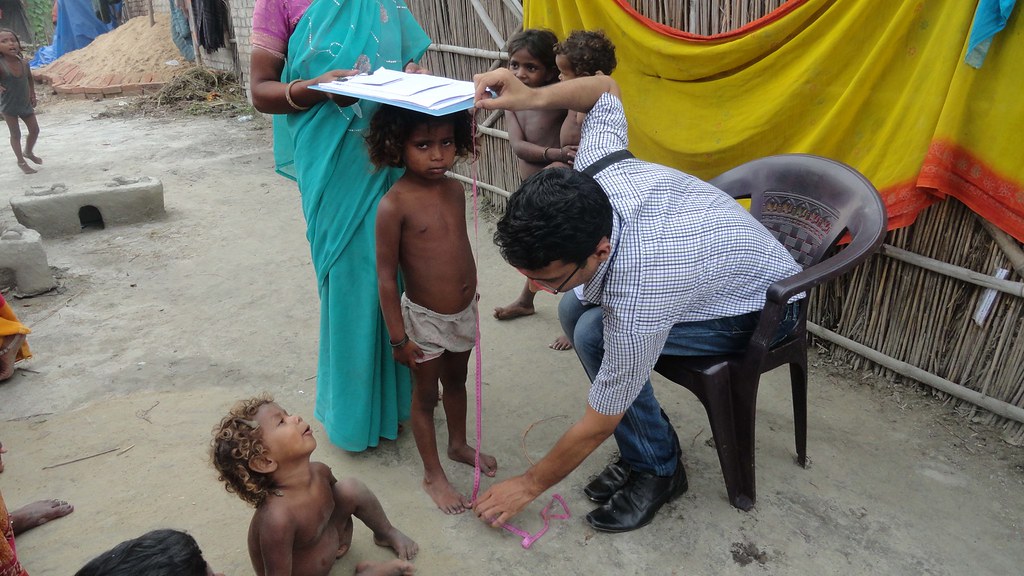According to the government of India website, as of April 27, 2020, there were 21,132 active COVID-19 cases; 6,361 patients were cured/discharged; and 886 died due to novel coronavirus SARS-Cov- 2 in India. The first case in India was reported on January 30 from Kerala, a southwestern coastal state known as God’s Own Country. The Ministry of Health and Family Welfare (MHFW) had confirmed the first COVID-19 patient patient was a student at Wuhan University in China. Since then, this disease has spread across PAN India excluding Nagaland, Sikkim, Dadra and Nagar Haveli and Daman & Diu, and Lakshadweep. Globally this pandemic has affected more than three million people and has caused ~211,202 deaths. The world’s most developed countries such as the United States (US), Spain, Italy, France, Germany and the United Kingdom (UK) which are known for the best healthcare facilities are the worst sufferers. The number of COVID-19 cases per million in these countries (US – 3,045/1,000,000; Spain – 4,907/1,000,000; Italy – 3,298/1,000,000; France – 2,541/1,000,000; Germany -1,891/1,000,000 and UK -2,315/1,000,000) are much higher than India (21/1,000,000). Many seem to be inquisitive to know how does India being the world’s second most populous country, with just ~$7 per capita health expenditure (compared to $10,246.14 in the US and $5,033.45 in Germany) have so few COVID-19 cases and death? Many allege that the real picture is being hidden by a lack of testing or may be India is underestimating the scale of this viral infection. The Indian Council of Medical Research (ICMR) on other hand refutes such allegation and claims that India is testing in a focused and targeted way. Despite India’s huge populations and poor healthcare infrastructure and systems, COVID-19 cases and related deaths have been nothing compared to western countries from Europe and America. The extensive secondary research suggests it can be the collective outcome of low testing rate, government-imposed PAN India lock down and under reporting.
Low Testing Rate for COVID-19
According to the worldometer and ICMR, a total of 6,65,819 samples have been tested as on 27 April 2020, 9 AM IST in India, indicating 482 tests per million population in contrary to 17,126 tests per million in the US; 28,779 tests per million in Spain and 29,600 tests per million in Italy (Graph 1). This figure is one of the lowest in the world, however, the ICMR interprets this figure in a different way.

Source: worldometer: April 26, 2020
ICMR counters the allegation of India’s low testing rates by claiming that the number of tests in India is more than other countries if we consider the number of samples tested to detect one positive case. India tests ~24 samples for each positive case compared to 11.7 tests in Japan, 6.7 tests in Italy, 5.3 tests in the US and 3.4 tests in the UK.

Source: www.statista.com, worldometer
A total of 277 government laboratories and 89 private laboratories testing COVID-19 are reporting to ICMR. In Maharashtra, majority of tests are being conducted in private laboratories. According to an article published on firstpost.com, of the cumulative 41,794 tests in the state as of Apr 21, 2020, ~50.78% had been conducted in private labs. In contrary, private laboratories contribution in Delhi has been modest with around 25% of the tests being conducted in private facilities.
Currently India conducts 30,000 to 35,000 COVID-19 tests per day which is more than 24 times since the lockdown began, however, it is still lower than ICMR claimed capacity. The testing strategy of India is currently focused and targeted which needs to be expanded further as a large number of patients tested positive had exhibited no symptoms. Graph 2 clearly suggests there has been continued increase in number of new cases with increase in number of samples tested, implying the number of cases are directly proportional to testing rate. Wherever more cases are being reported, it directly implies a higher testing rate, for instance, Maharashtra, Gujarat, Delhi, Madhya Pradesh, Rajasthan and Tamil Nadu are leading in terms of COVID-19 cases mainly because of high rate of testing in these states. The ICMR has announced to scale-up the testing capacity to 1 lakh a day in the upcoming months, and therefore, many healthcare experts believe the further increase in testing capacity will most likely witness huge surge in the number of COVID-19 cases in India.
A Nationwide Lockdown
India is exercising the world’s largest COVID-19 nationwide lockdown of 40 days starting from March 25th till May 3rd, 2020. On 27th April, in a video conference with chief ministers, PM Modi indicated that the lockdown may continue even after 3rd May with relaxations in economic activities and public services in green zones. Since the lockdown began on March 25, the country has been able to cut transmission of COVID-19, minimize spread and increase the doubling days of COVID-19. According to the MHFW, before the lockdown it used to take 3.5 days for Covid-19 cases to grow in India by 200 per cent, however as a result of lockdown, the growth rate has slowed down to 7.5 days. The lockdown has also enabled nation with enough time to prepare itself against possible surge in cases when the pandemic is forecast to peak in coming weeks. The PM Modi claimed, due to timely measures, India has been able to protect thousands of lives in the past 1.5 months. Though it is mysterious how the outbreak will unfold once the lockdown will be lifted, it has certainly played a key role in slowing down the COVID-19 spread during the lockdown period. According to NITI Aayog, without the lockdown, India would have witnessed over 10,22,283 cases, approximately 44 times higher than current no of cases.
Under Reporting COVID-19 Cases
India, the world’s second most populous country with underfunded and struggling healthcare systems, could possibly be under reporting COVID-19 cases. The continued rise in new cases, virus spreading between communities in many Indian cities including Mumbai, Delhi, Ahmedabad and Indore, and no symptoms in approximately 80% cases raise concerns that the actual number of cases would be much higher than what has been reported. According to Raman R Ganga khedkar, chief epidemiologist at ICMR, of 100 people with infection, 80 do not exhibit symptoms. Many doctors and public healthcare experts also complain about the inadequate analysis of covid-19 data by the ICMR, leading to doubt regarding the true picture of pandemic spread. ICMR is the only body in India that is authorized to release data on number of COVID-19 cases. According to the Supreme Court advocate K.V. Dhananjay, ICMR procures the data directly from testing centres, and does not share it with the states. The true picture of COVID-19 cases will be clearer only if the ICMR presents a detailed dashboard analyzing data considering multiple parameters including data by age group, sex, symptomatic/asymptomatic nature of infection and data at district and state level.
In addition to the above mentioned pointers, other factors contributing to the relatively low number of COVID-19 cases could be high tuberculosis vaccination rates, exposure to malaria, high temperature and Indian demography with relatively low percentage of elderly population compared to the US and European countries. The data from World Bank suggests India is one of the youngest countries in the world with ~6% of its population aged over 65 years. This compares with 28% in Japan, 23% in Italy, 21% in Germany and 16% in the US.
Shamsuzzaman Ansari is a Healthcare Research Analyst based in Noida.













